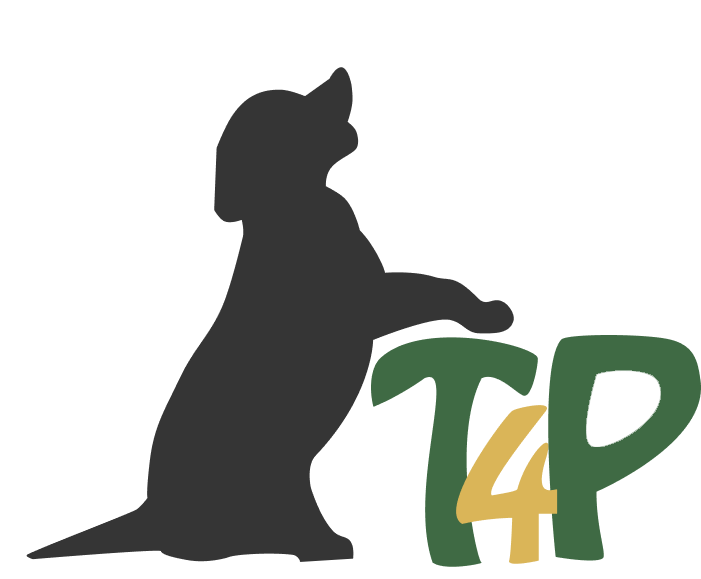"300 Peck" for distance and duration in dog training
Does your dog struggle to hold a longer duration or distance? Support him with a method that will set him up for success!
Pimp yourDog Training: Part 1 (Scotland)
Walking on a loose leash starts quite well, but after a few steps your dog starts to pull again? Are you trying to teach your dog a reliable stay on his mat, but after a few seconds his concentration is gone and he gets up again? A very simple technique to build up a very reliable distance and duration, is the training method 300 Peck.
Kanzi is now 13 weeks old and the next vaccination appointment is coming soon. In order to make Kanzi feel as comfortable as possible during her visit at the vet’s, her guardian Tracey wants to teach her a sustainable nose touch. Kanzi is going to learn to press her nose against Tracey’s palm for the duration of the examination.
The nose touch is one of Kanzi’s most favourite cues. Now Tracey is going to work on the duration that Kanzi’s nose is to stay on her palm.
My colleague Claire Staines of Lothlorien Dog Services uses the method 300 Peck for this.
300 Peck
The method 300 Peck was developed to teach pigeons in a laboratory to pick a target 300 times before receiving a reward. This may sound unbelievable at first, but do we not ask just that from our dogs? We expect them to walk along a street with us on a loose leash, to heel accurately for the duration of an obedience test, to lay down quietly while we have our mealin a restaurantor to stand calmly while we brush or examine them.
Often the beginning of these training sessions work quite well, but after a few steps or a certain period of time, the dog is no longer able to stay concentrated. With 300 peck your dog learns to keep his focus. You can use it for any training that requires either increasing duration or distance.
How does it work?
Tracey defines the training criterion. For Kanzi the criterion is: nose touches hand. Everything else does not matter. At that moment, it’s not important whether she stands or lies, does a handstand or barks.
Once Kanzis nose touches Tracey’s hand, Tracey counts loudly or quietly in her head: “One” – Does Kanzi’s nose still touch her hand, then she marks and rewards.
The next trail would be “one – two” -Does Kanzi’s nose still touch Tracey’s hand, then she marks and rewards and so on:
Nose Touch – one – click + reward
Nose Touch – one – two – click + reward
Nose Touch – one – two – three – click + reward
Nose Touch – one – two – three – four – click + reward
Nose Touch – one – two – three – four – five – click + reward
etc…
If Kanzi interrupts the nose touch, Tracey starts counting again.
Nose Touch – one – click + reward
Nose Touch – one – two – click + reward
Nose Touch – one – two – three – click + reward
Nose Touch – one – two – three – four – click + reward
Nose Touch – one – two – three – four – Kanzi turns away
Nose Touch – one – click + reward
Nose Touch – one – two – click + reward
Nose Touch – one – two – three – click + reward
Nose Touch – one – two – three – four – click + reward
Nose Touch – one – two – three – four – five – click + reward
Nose Touch – one- two – three – Kanzi turns away
Nose Touch – one – click + reward
Nose Touch – one – two – click + reward
Nose Touch – one – two – three – click + reward
etc.
Many advantages and one disadvantage
The method 300 Peck has many advantages but also one disadvantage.
- Your dog learns to reliably understand the concept of duration and distance with the help of 300 Peck.
- The method helps your dog stay motivated, as he can count on a success rate of over 80%, which is necessary to enable ideal learning.
- You keep track of your training because all you have to do is count, and you’re not tempted to skip important steps and move through the training too fast.
- If you keep a training diary, the documentation of your dog’s learning progress and the identification of training plateaus is very simple
- If you count out loud, your counting acts as an intermediate bridge, making it easier for your dog to keep his focus.
- 300 Peck works particularly well during the first training steps towards more distance and duration. Your dog will, however, need to stay focused for an ever increasing duration or distance, which may have a demotivating effect in advanced stages of training. Therefore, it is recommended that once he has understood the concept of duration and distance, to switch to a variable reinforcement scheme, so that he never really knows, will he get his reward after only five seconds or maybe one minute.
In the video you can see Claire teaching a puppy and her guardian to build up the duration of walking on a loose leash with the help of 300 Peck.
Your dog has not yet learned to walk on a loose leash? Before going for duration and distance, teach him how to be a Loose Leader.
Find out more about using a Nose Touch or similar as a cooperation cue in husbandry and medical training and check out the Bucket Game.
